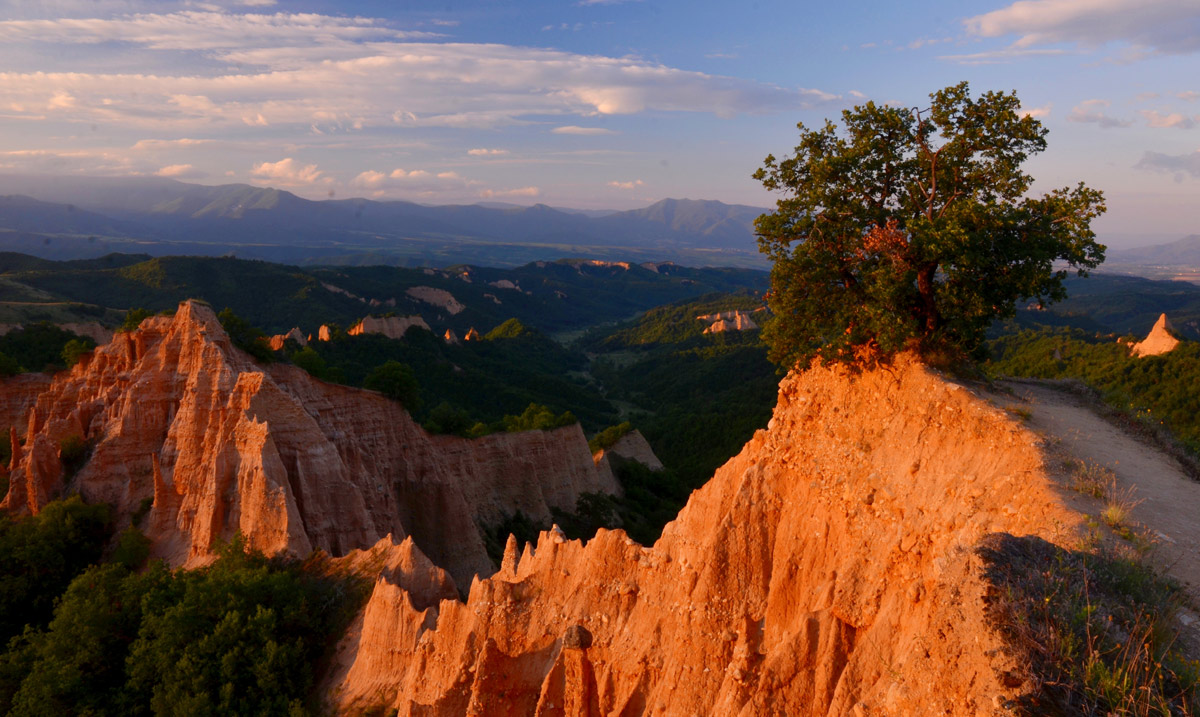Part 1 – Travel Essentials
Overview
Bulgaria is land little known to most non-Europeans. Many associate the country with Olympic weight lifters and wrestlers or as a member of the Soviet dominated Warsaw Pact. Despite this obscurity, it should be a main consideration when travelling to Eastern Europe.
There is a lot to offer for nature lovers. One-third of the country is mountainous, including the Balkans mountain range which bisects the country from north and south and is the basis of the region’s name. There is a long Black Sea coast which is full of sun worshippers. It has one of highest levels of biodiversity in Europe with incredible flora (amazing variety of flowers and plants, plus thousands of acres of trees planted during the Communist era to stop erosion) and fauna (a wide array of birds and insects, plus bears, wolves, hares, frogs, lizards, snakes, etc.).
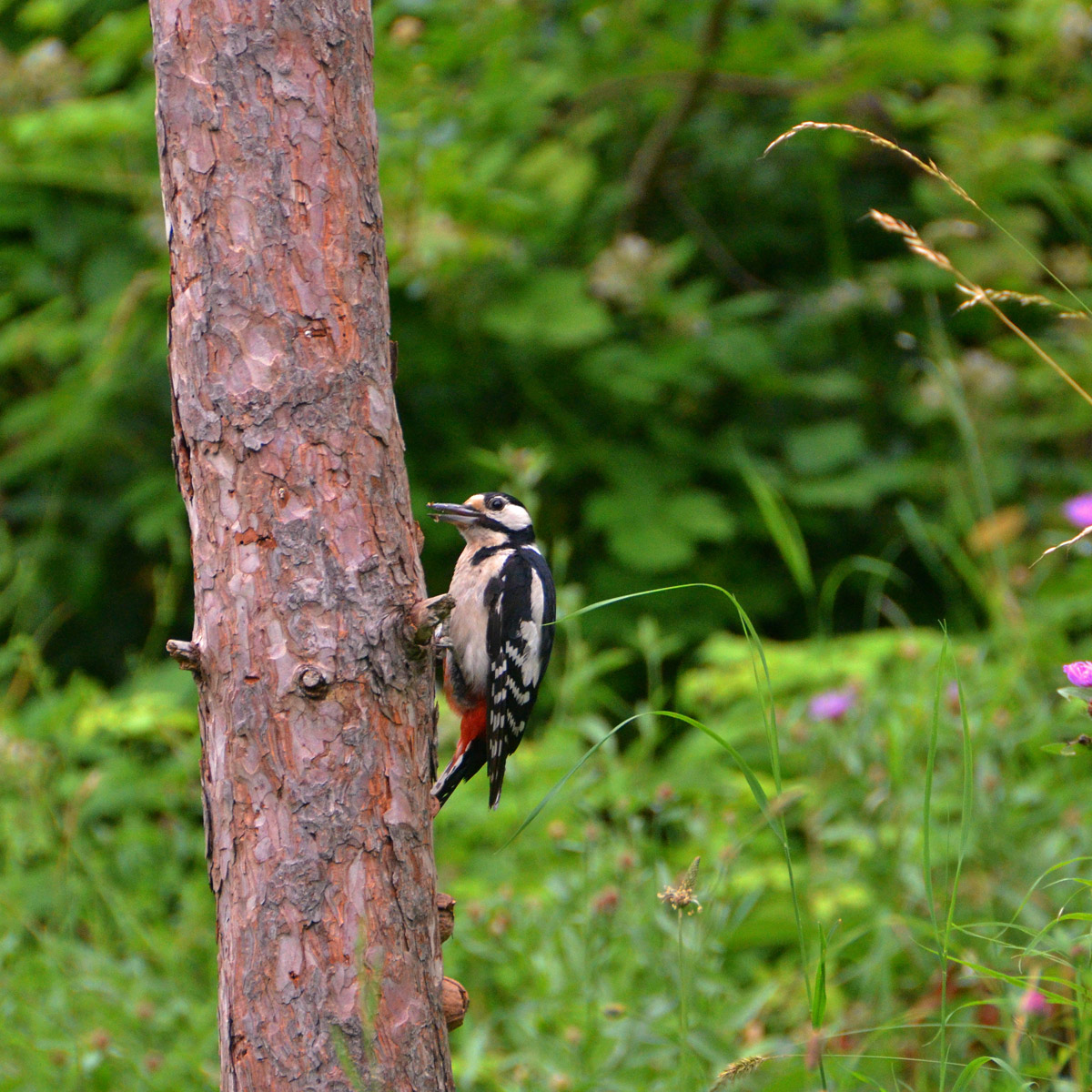
The climate is a mixture of Mediterranean and continental with ski slopes and temperatures above 100° F in the summer. The country has a robust agricultural sector exporting wheat, corn, barley, sugar beets, sunflowers, tobacco, tomatoes, cucumbers, peppers, apples, grapes, raspberries, yogurt and cow and sheep cheeses. It has been producing wine for thousands of years and was a huge exporter during the Communist era. The industry is now on a growth streak. Bulgaria is one of the largest producers of rose oil in the world. Each year a Rose Festival is held in the town of Kazaniak around early June.
There is a rich diversity in the Bulgarian culture, starting with Thracian tombs and golden treasures; some over 7,000 years old. It has its share of Roman ruins scattered throughout the country. The country is named after the invading Bulgars, semi-nomadic warrior-Turkic tribes who ruled the area in the 7th century AD and eventually assimilating into the local populations, especially Slavic, and customs, including Orthodox Christianity, to form modern Bulgaria. Bulgaria developed the Cyrillic alphabet, used by 250 million people today. The country has many churches and monasteries which kept the religion and culture alive during times of war and oppression through icons, paintings and manuscripts. Being in the crossroads between great powers, it was often occupied, including five centuries by the Ottoman Turks, evident today by many mosques, Islamic architectural styles, Turkish-influenced cuisine and a sizable population of Muslims. The country survived World War II, forty years of Communism and, in 2007, became a member of the European Union.
My wife Khadija and I traveled there from June 16 to June 22, 2017, touring the mountainous southwest part of the country. This was the first leg of our trip to Budapest, Vienna and Cyprus. Like most Americans, we were ignorant of the country, but were determined to find out the basics. We were impressed by the biodiversity and marveled at its long history, folk and religious traditions, friendly people who often do not speak English and the sheer perseverance of the culture. Also, it is a bargain to travel in, perhaps only 60% of the cost of traveling in adjacent Greece.
Facts
Bulgaria is 42,855 square miles, about the size of Virginia. The official population is about seven million, but actual inhabitants maybe around five million (Virginia has over eight million). About 1.7 million live in the Sofia metropolitan area. Sofia had only 70,000 residents in 1900 and experienced rapid population growth after the fall of the Berlin Wall in 1989.
The population of Bulgaria has been steadily declining since the end of the Communist era when it was about nine million. This drop is due to mass migration looking for employment, high death rate and low birth rate; which has caused Bulgaria to maybe have the lowest population density in southeast Europe. As a result, there are several villages, especially in the mountains, that are ghost towns or barely populated. The residents in these spots of decaying buildings and infrastructure are mainly the elderly, although the population may soar in some locales during the summer as a vacation retreat from Sofia and Plovdiv.
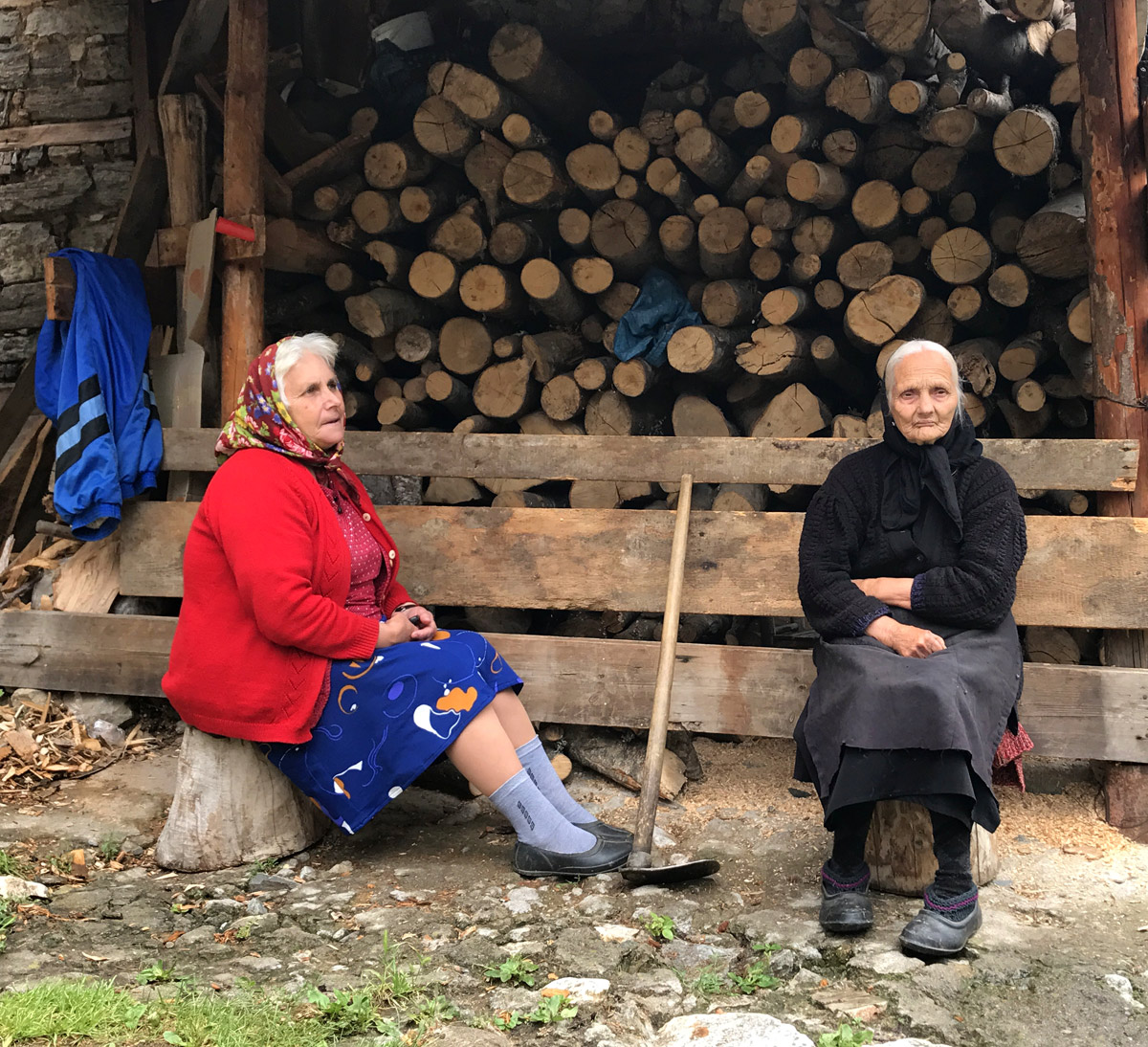
Ethnic Bulgarians are about 85% of population, Turks are about 8%, Roma (Gypsies) about 5% and Russians, Armenians and others are the rest. Sources vary but about 90% are Christian or non-affiliated and the rest are mainly Muslims. Probably about 80% of the Christians are followers of the Bulgarian Orthodox church. There was once a vibrant Jewish community, but few Jews live here today.
Bulgarian is the country’s only official language and spoken by almost everyone. It is a Slavic language and is very close to Macedonian. The alphabet is Cyrillic, which is also used by Russia and Serbia.
Visa Requirements
Bulgaria is part of the Schengen Area comprising twenty-six European states that have officially abolished passport and all other types of border control at their mutual borders. Residents of the USA, Canada, Australia, New Zealand and most countries of Latin America do not need visas for a stay of ninety days within any six-month period.
Currency
Bulgaria’s currency is the Lev (plural Leva). Lev is an archaic word for lion, which is a national symbol. One US dollar equals .58 Lev during our trip. There are ATM’s in towns and cities which have banks. Few places accept Euros (fixed rate of 1.95 Leva to 1 Euro), so you need to have enough local currency when traveling.
Credit Cards
Credit cards can be used where there are tourists, but most of daily business is conducted in cash
Air Travel
Our primary destination was Cyprus to visit a friend. We found that flights between Cyprus and the rest of Europe were relatively inexpensive. We used United frequent flyer miles to fly to Budapest (with Lufthansa) and return from Sofia (with Austrian Air). There was no more frequent flyer mileage used then if we flew round trip to either Budapest or Sofia, so this was a way to travel to two countries for the price (in mileage) of one.
Transportation
You can take buses and trains to many towns, cities and major tourist sites. However, to see small, out of the way villages, you need to rent or hire a car. We contacted Emil Enchev, a noted bird photographer whom we found on the internet, about photographing in the country and he informed us that he provides tours. After a few emails and researching his background (he started off as a veterinarian, then followed his passion in photographing in nature), we agreed that he would drive us in his Honda CR-V throughout the southwest part of the country for six-full days, pay for all our food and lodging, for €1,800 (US$ 2000). While this was probably about 50% to 75% more the amount we would have spent on our own if we rented a car and made our own arrangements, we would have never been able to find the natural settings, excellent small inns and small villages he showed us. Emil is a terrific guy, very calm and always wanting to provide his clients with the best experience possible. He was indispensable in communications with local people, as English is not that widely spoken where we travelled. Plus, I picked up a lot of good tips on photography. We highly recommend him for any kind of photo-oriented tour in Bulgaria. If you are interested in bird photography, he is one of the best anywhere. He can be contacted through http://www.cometobg.com/.
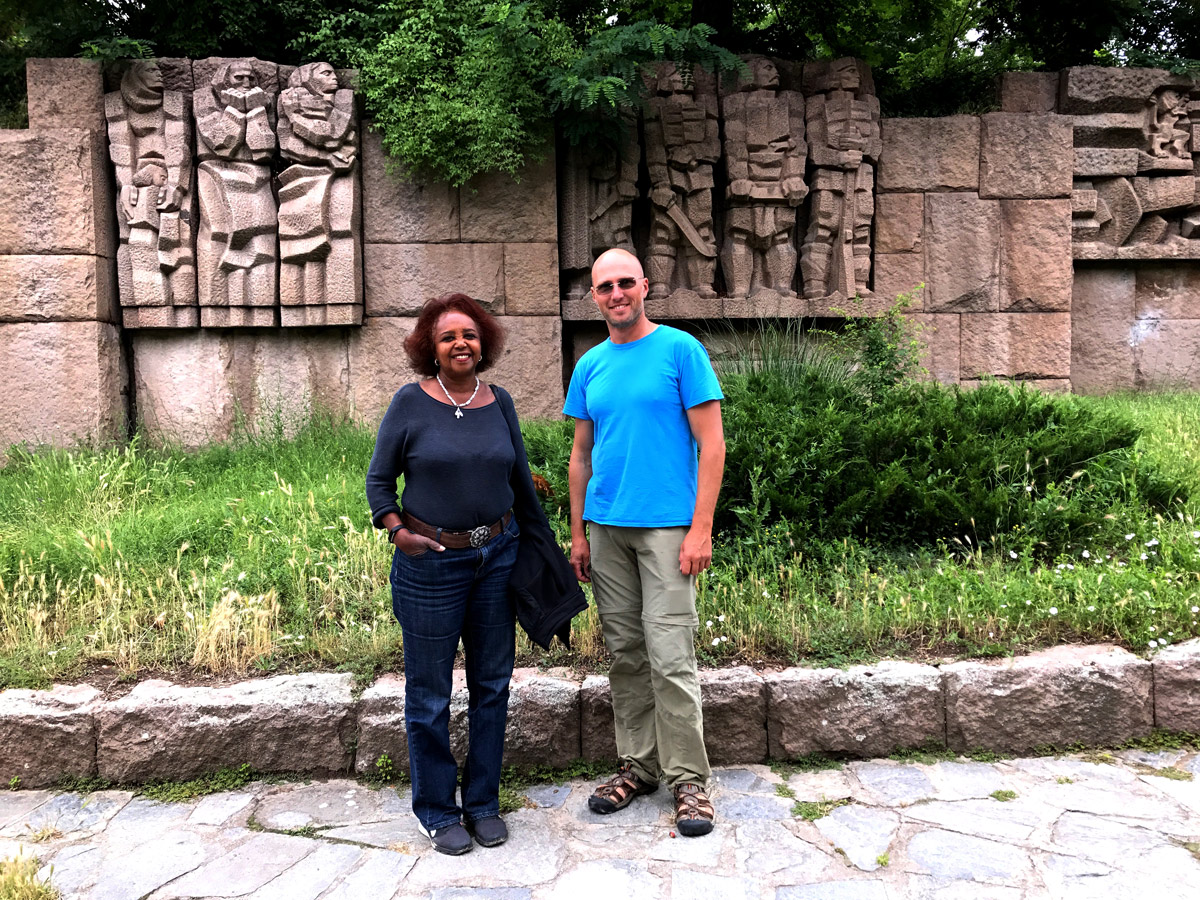
Lodging
We stayed in small, local hotels called hans. They were comfortable, clean, had Wi-Fi and good plumbing. The food was always local dishes, usually prepared by the proprietor. We found the food either excellent or pretty good.
Restaurants
We ate in a few restaurants on the road. The food was generally fresh and extremely well priced compared to New York City. My favorite dish was the Bulgarian village salad, a variation of a Mediterranean salad. Local Bulgarian wine is surprisingly good, but it should be tasted before ordering
Internet and Phone
Internet access is widely available in Bulgarian. We used a roaming plan from our AT&T Wireless service in the US. It cost $60 for free texting (for some reason it didn’t always work), phone calls for $0.50/minute and 300 megabits of data (which was enough as we used WiFi extensively). We may have been able to save money getting a SIM card in each country, but it did not seem worth the hassle.
Of course, you can always use Skype, Google Voice or other apps from your computer to make calls, if you have internet access.
Safety
The country is very safe. Some towns do not even lock their doors. Of course, you have to use common sense and be aware of your surroundings.
Travel Guide
I am a Rough Guide aficionado, but I could only find a Bulgaria guide by Eyewitness Travel, updated in 2014, in my local book store (Book Culture, 536 W 112th Street, NY, NY 10025). It is full of color pictures which are sometimes very useful. It had all the basic information needed for a one week trip with good sections on history and practical information
Part 2 – Discovering Southwest Bulgaria
We had only six-full days in Bulgaria. We could have made mad dashes across the country to see the highlights in the tourist books, however, we decided to concentrate on the mountainous southwest, which we were most interested in.
Rila Monastery
Our guide Emil picked us up in Sofia, located six miles east from the center of the city, and in an hour of half of driving, we arrived at Rila Monastery, one of the most popular tourist sites in Bulgaria and a UNESCO World Heritage Site. It is a roughly pentagonal complex in the Rila Mountains. The Eastern Orthodox monastery has been in existence for a thousand years, although it was rebuilt after a fire in the 19th century.
There is no admission. You can walk around the grounds and photograph anything. The architecture reflects the eclecticism of the country’s building boom in the late 19th century. There are numerous arches painted in horizontal black and white stripes, arches, domes and other decorative designs throughout, some reminding me of Islamic architecture I have seen in the Middle East and North Africa. On the outside walls and domes, there are fascinating frescos.
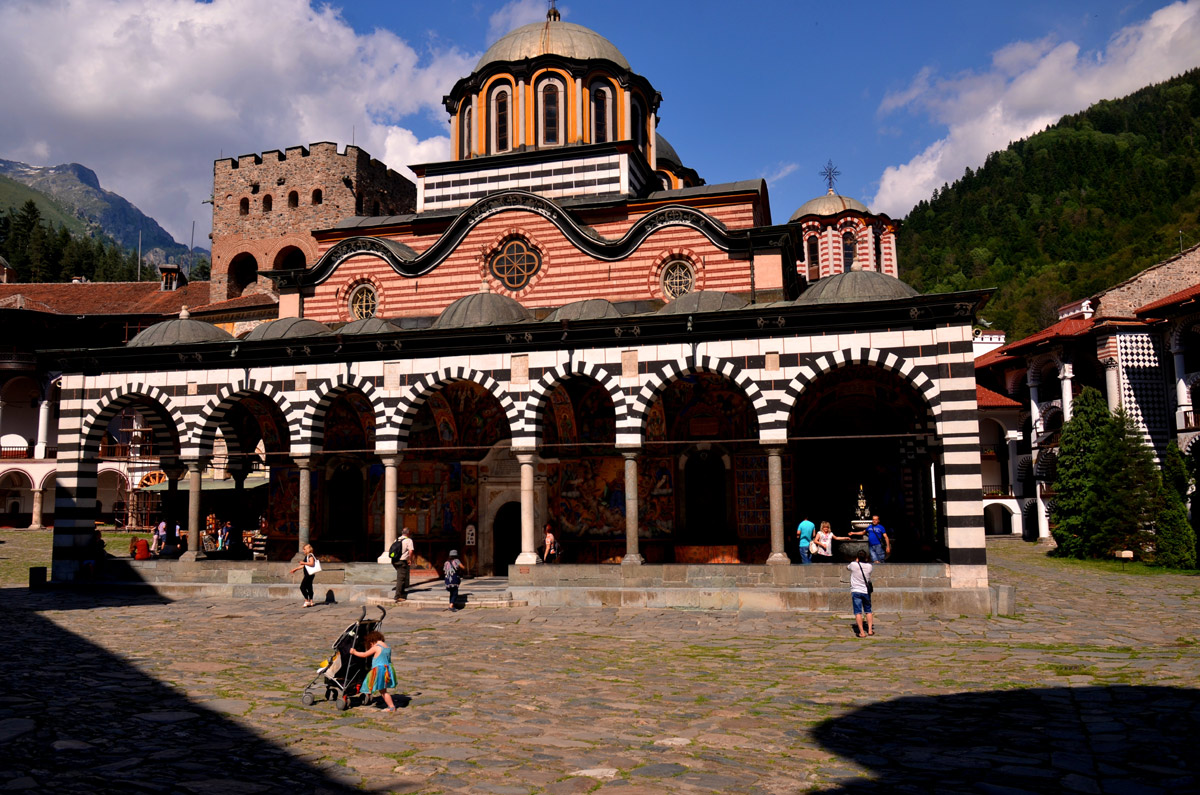
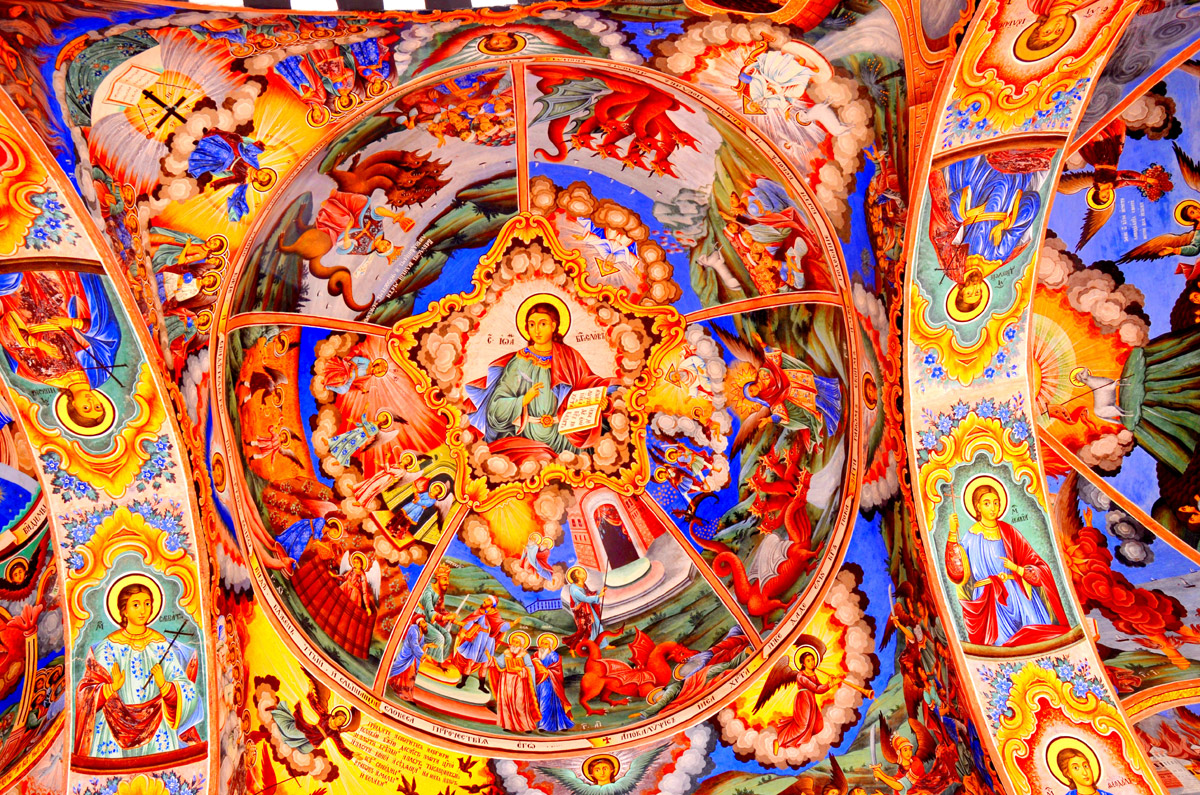
The inside of the Church of Venus is covered everywhere with frescos (which would take several days to observe each one in detail, plus a sore neck looking up) and golden framed icons. No photography is allowed inside.
The monastery has a formidable library of books, manuscripts, letters and other documents. There was no special exhibition while we were there, so we did not see any.
We spent about an hour there, which is a reasonable time to observe some of the rituals of the monks and appreciate the art and architecture. There is extensive information and pictures on the web about this national treasure.
Hotel Zlaten Rozhen
We stayed two nights in Motel Rozhen (or Rozhen Han). As far as lodging, it was the highlight of the visit because of 1) the food was fresh, well cooked and could be easily modified to your liking and 2) the service (need fresh coffee at 5:30am before a hike, no problem). It has been owned and operated for decades by Blago and his son, both whom are excellent chefs.
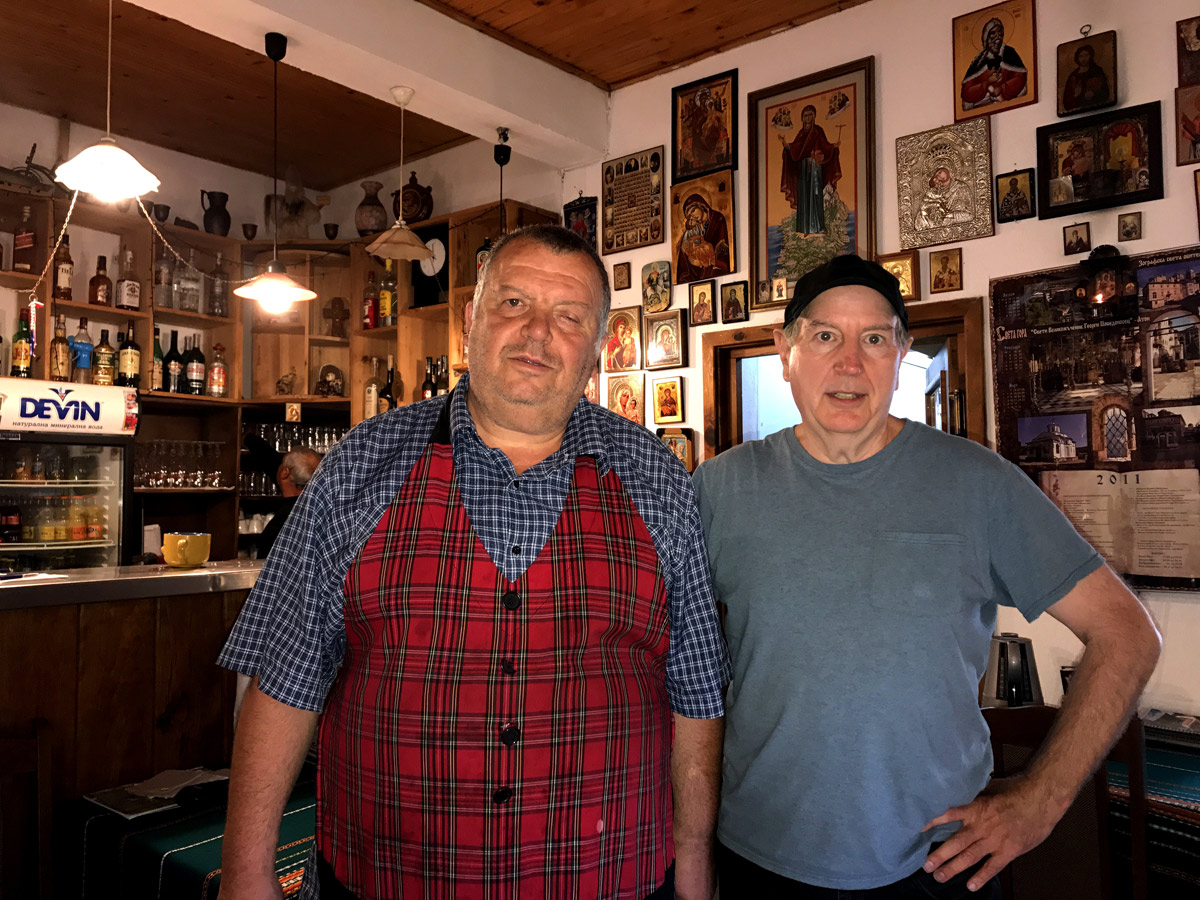
Pirin Mountain’s Sandstone Pyramids
Growing up in Colorado and traveling extensively through the southwest US, I have seen my share of spectacular landscapes. I was taken aback by the sandstone pyramids, towers and peaks surrounding the town of Melnik and villages of Karlanovo, Rozhen and Sushitsa. I have never seen anything quite like this. As sandstone erodes easily on a geological timescale, they have been sculpted to surprising geometric shapes with trees and bushes clutching for survival.
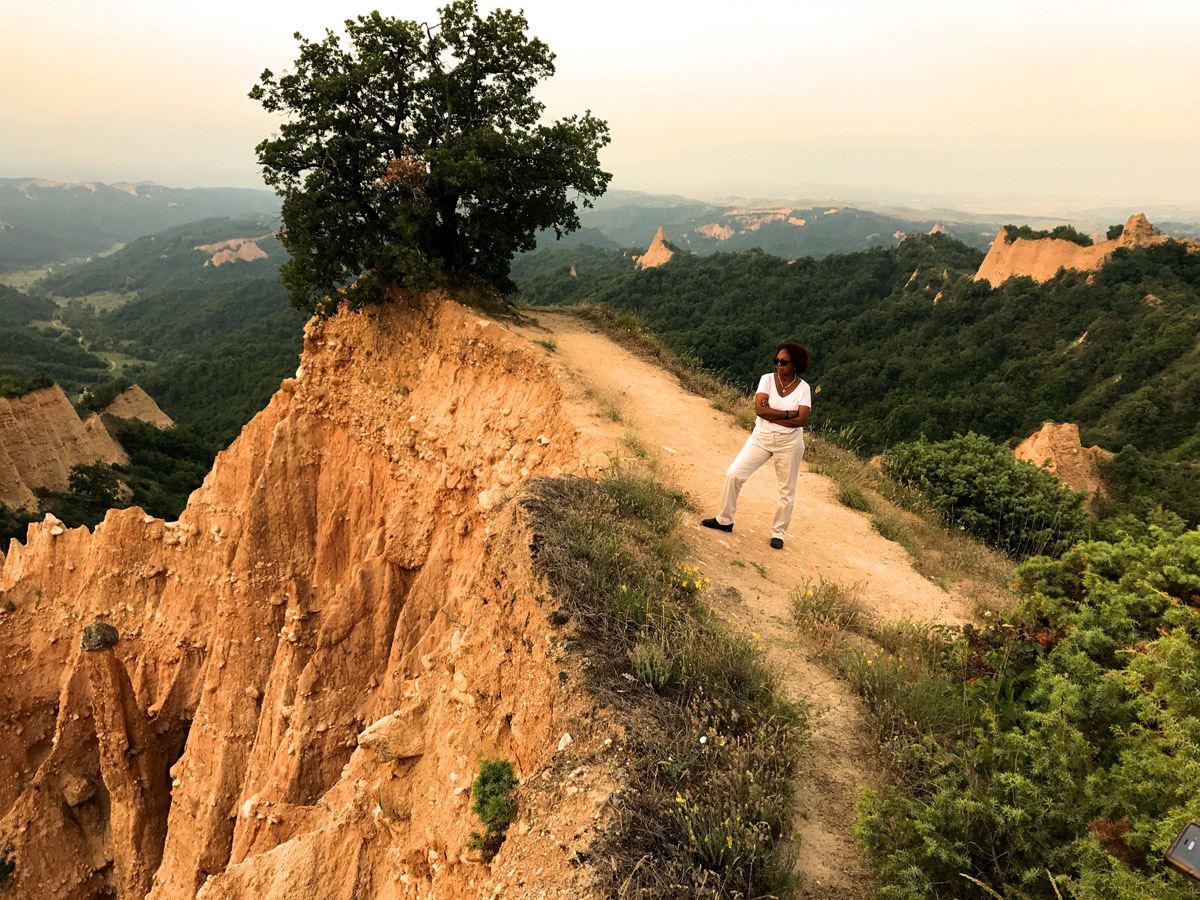
Rozhen Monastery
The Rozhen Monastery of the Nativity of the Mother of God, parts of which started over 800 years ago, is worth a visit to see the chapel (no photography allowed) with murals from the 16th through the 18th centuries, unique wood-carved altars and numerous icons. There was an interesting donation space on top of a water fountain:

But the best gift in my opinion was the serenity of the courtyard, even with a few tourists coming in and out. Hanging on the tree branches outside the monastery, we saw martenitsa (“Grandma March”), which are red and white woven threads hung branches to welcome the spring.
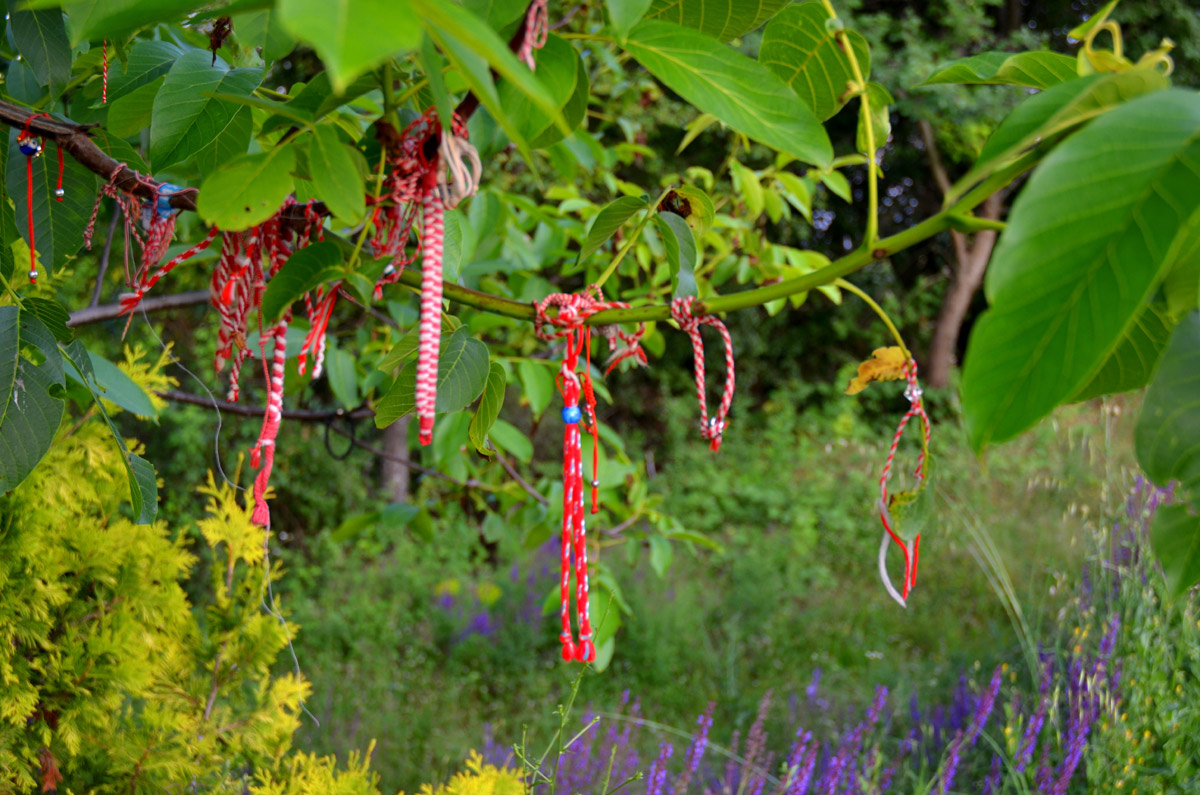
Melnik
The smallest town in Bulgaria is a pleasant place to stop for lunch and taste local wine. Many restaurants and homes have huge wine cellars which are interesting to see.
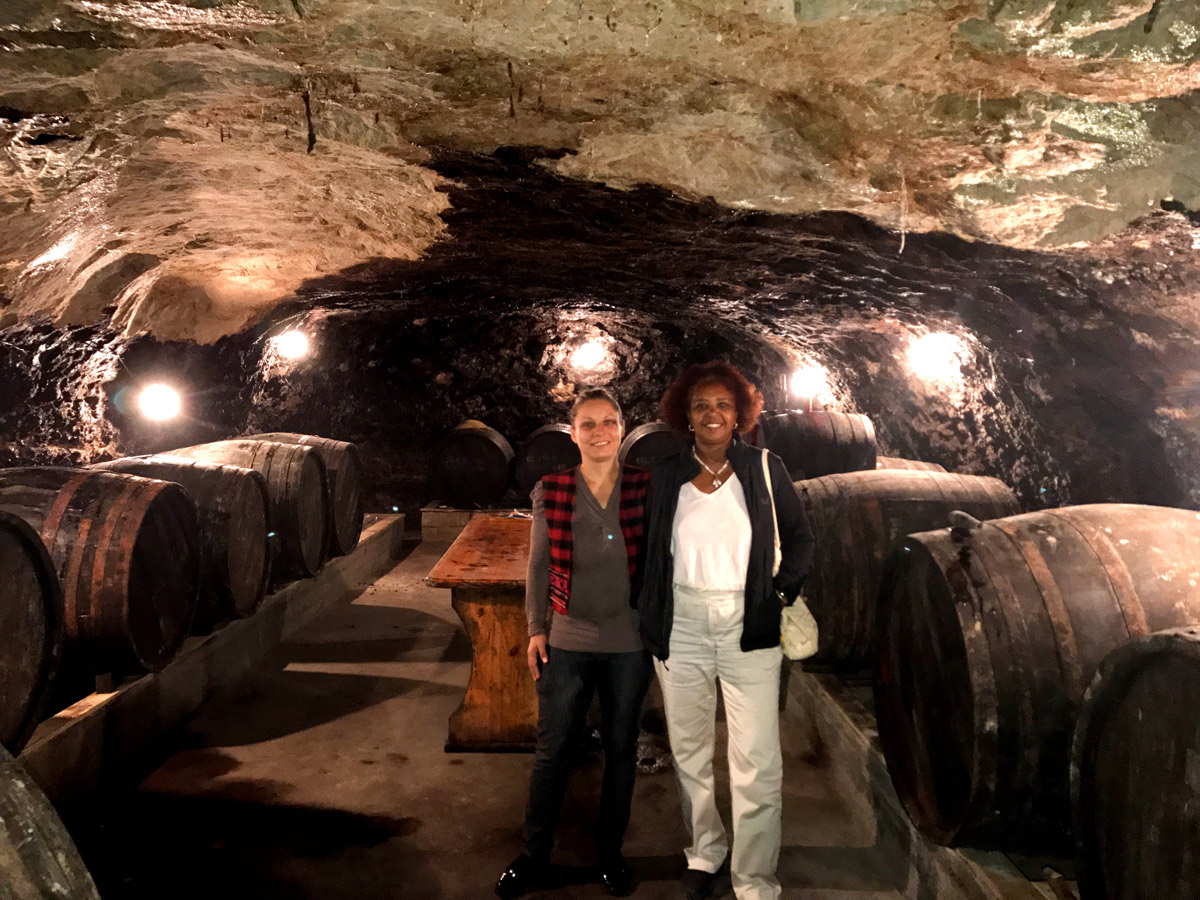
The Kordopulova Kushta house, a former home of a wealthy wine merchant family, has a sprawling wine cellar which is worth a visit if you have an extra hour.
Small Villages in Rila Mountains
A highlight of our visit was going to several small villages. Some Emil knew, others were new to him. As Bulgaria is depopulating, especially in the mountains, several have abandoned buildings and an aging permanent population.
In Kashena, we met the local goat farmers and watched a shepherd walk his flock of goats down the road.
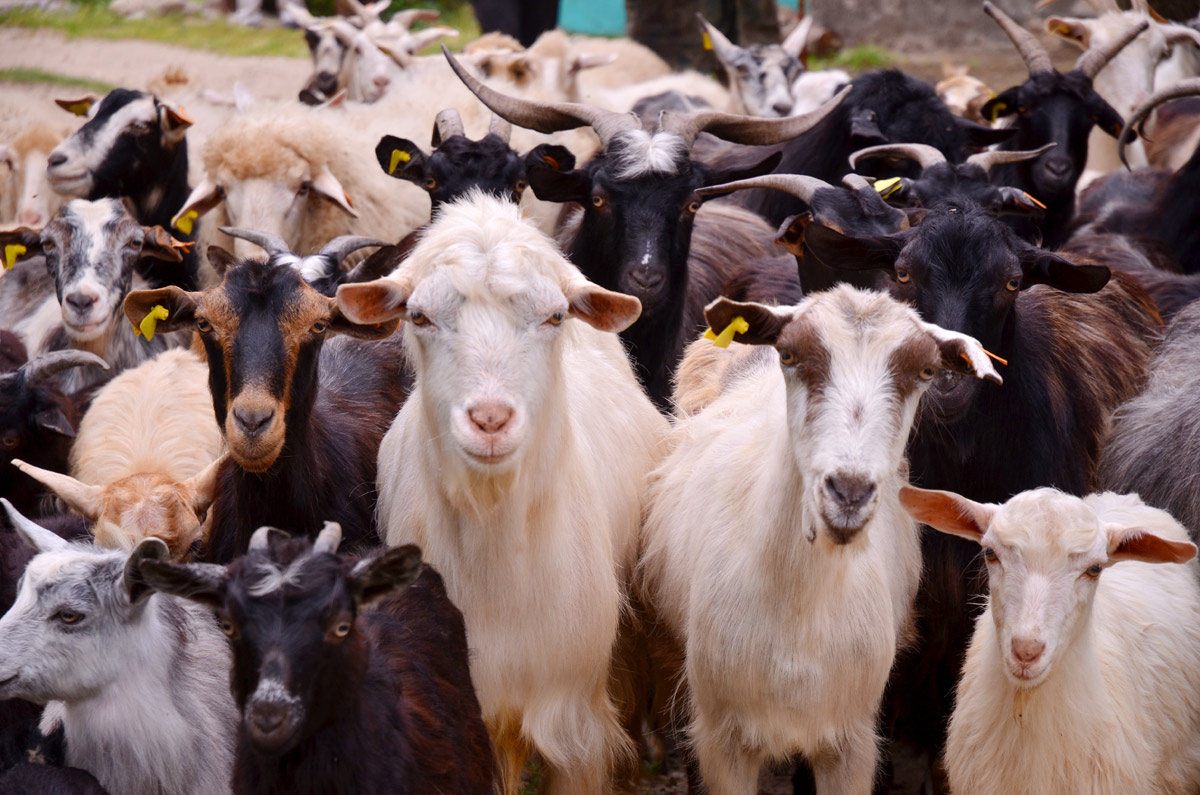
In Petrovo, we saw several discarded Ladas, simple and functional Russian cars (over 20 million sold), on the side of road. One local, driving a working Lada, said they had been there for at least ten years.
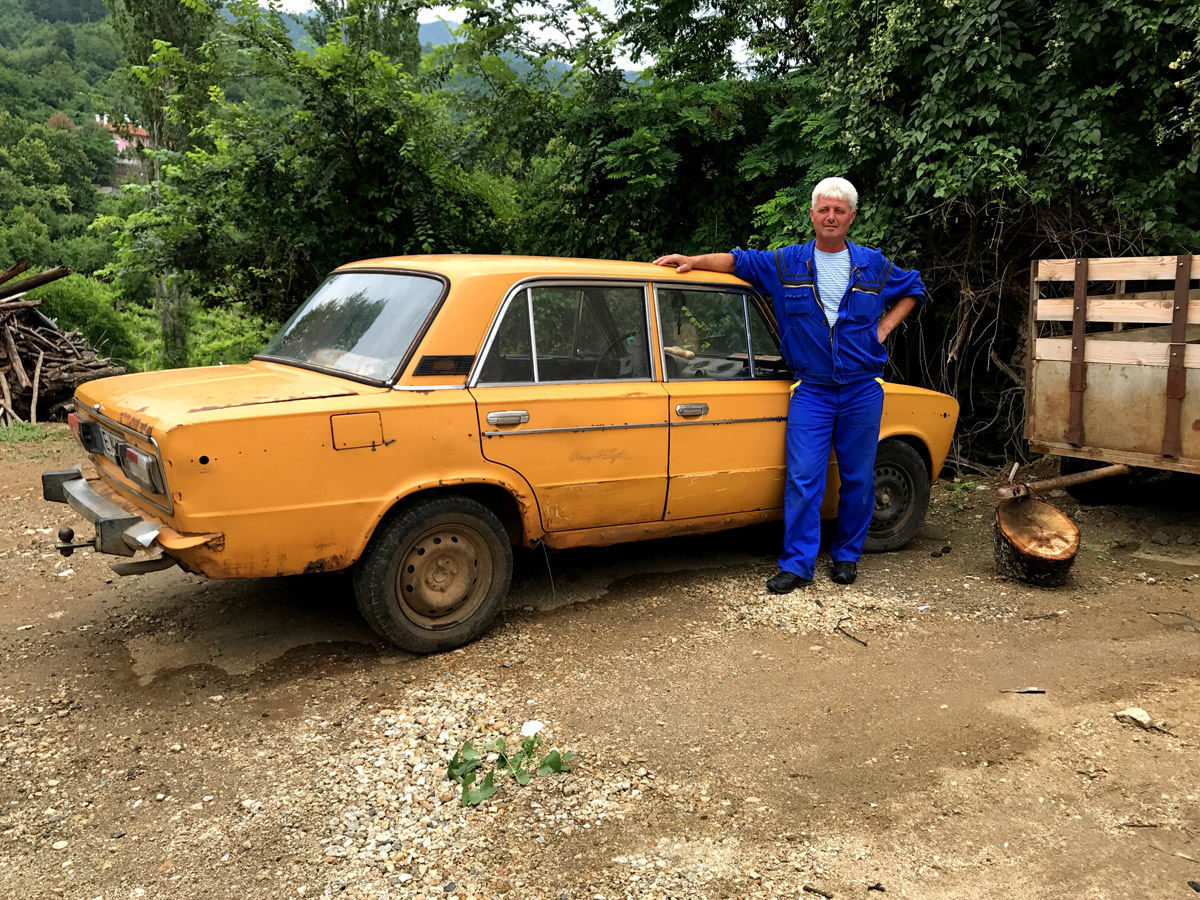
Goleshovo is a mostly unpopulated village with a very cool water fountain.
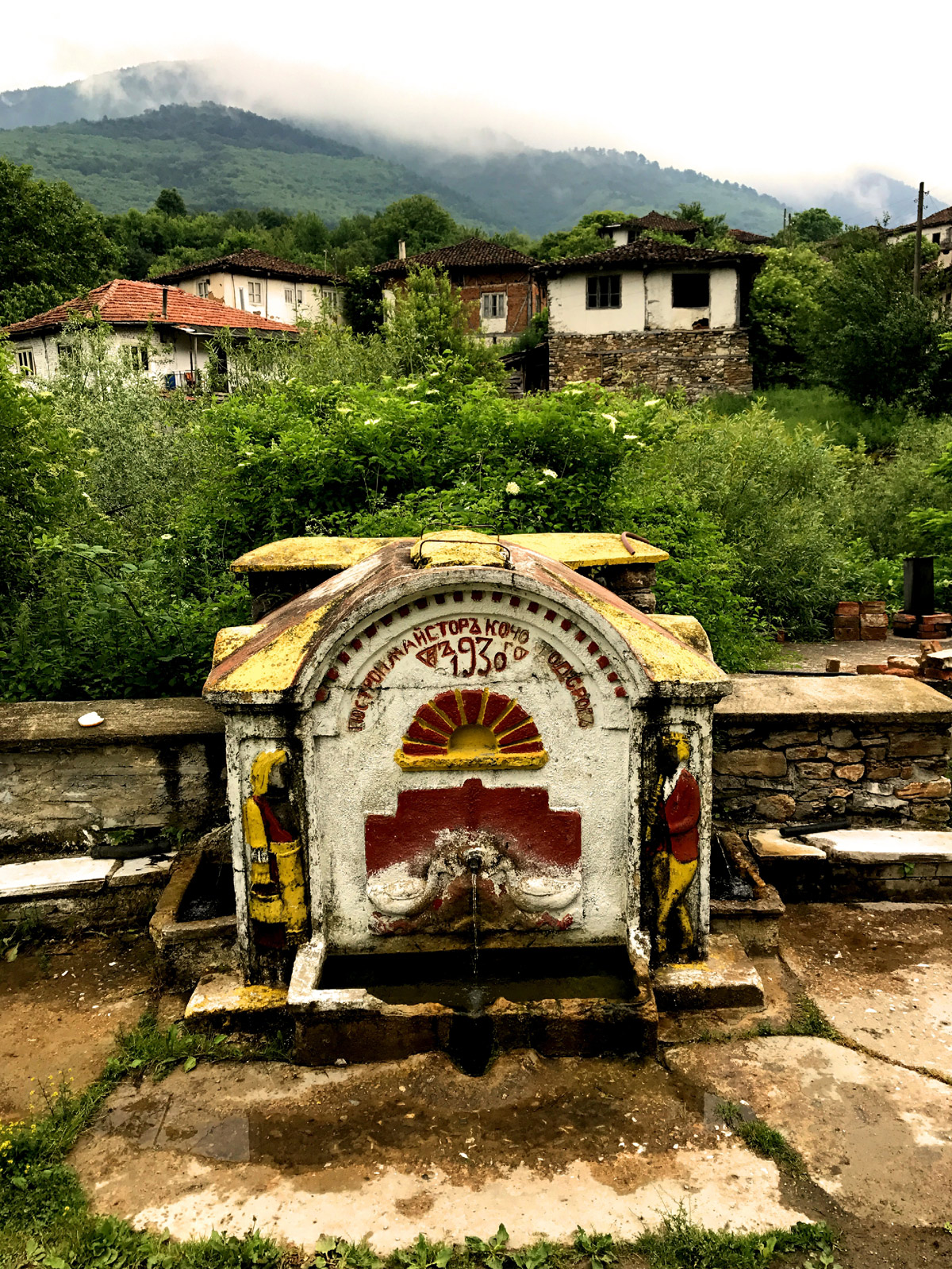
was here, I first notice the sheets affixed on buildings with a small picture of a deceased with a little biographical information. As an outsider, they were a bit macabre, but a tradition in Bulgaria. They are not only put up right after the death, but renewed annually, I guess until no one remembers or cares enough about the person.

Pirin Village was a trip to a half-century ago. Many very long-term residents live there, dressing in a traditional style. While their lives may seem challenging or boring, I was told Bulgarian mountain folk live long lifespans. If true, no doubt the lack of pollution, junk food and urban stress, plus physical work are contributing factors for their longevity.
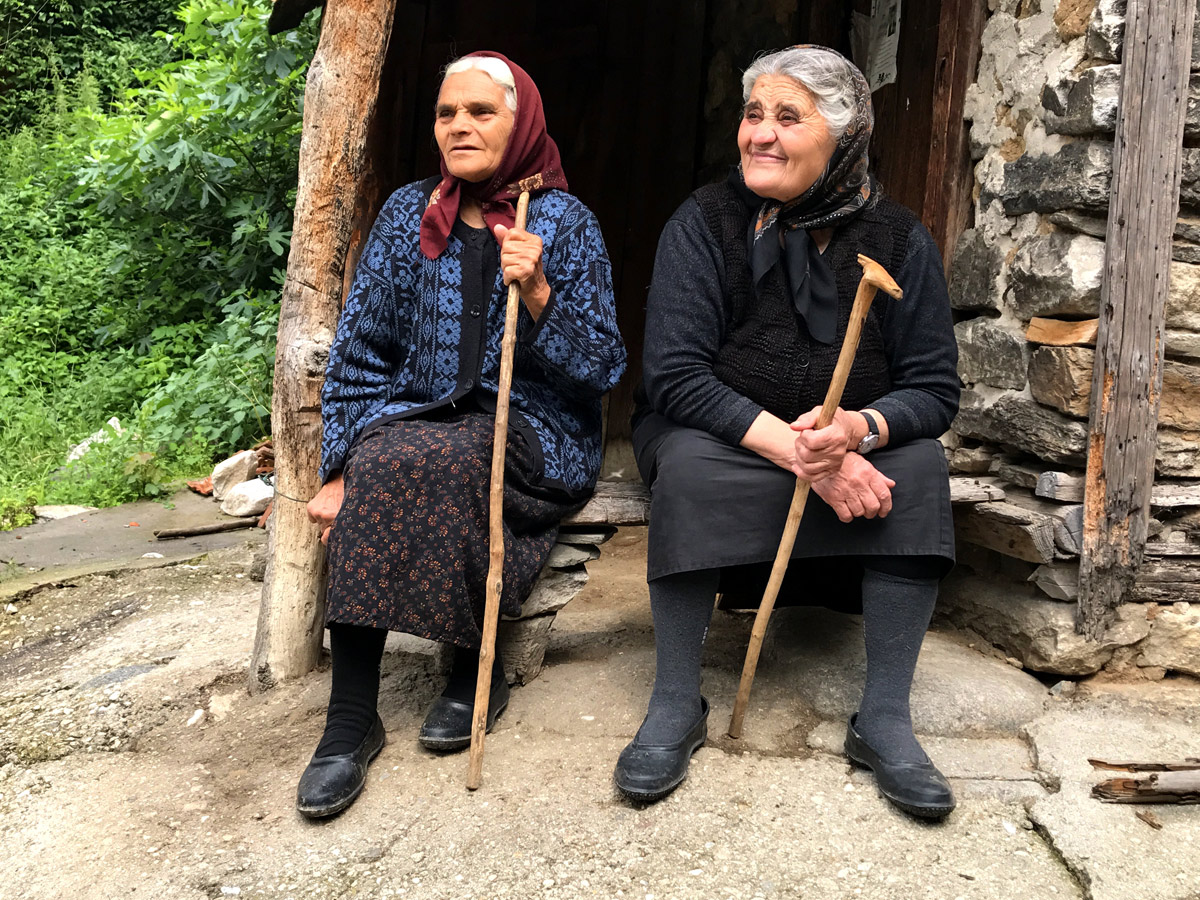
Driving East by the Greek border
After you pass the small and modern city of Gotsedelchev, you’ll see minarets in the passing cities as this is main section of the country where Muslims live. Many are of Turkish descent, but not all. We did not see any veiled women or men with skull caps. The Muslims dress the same as others in Bulgaria and reflect the moderation and toleration of the country towards religion.
Kovachevitsa is a village of stone houses on a steep slope. The house’s ground floors often did not have windows serving as a shelter for farm animals and defense against Ottoman raids.
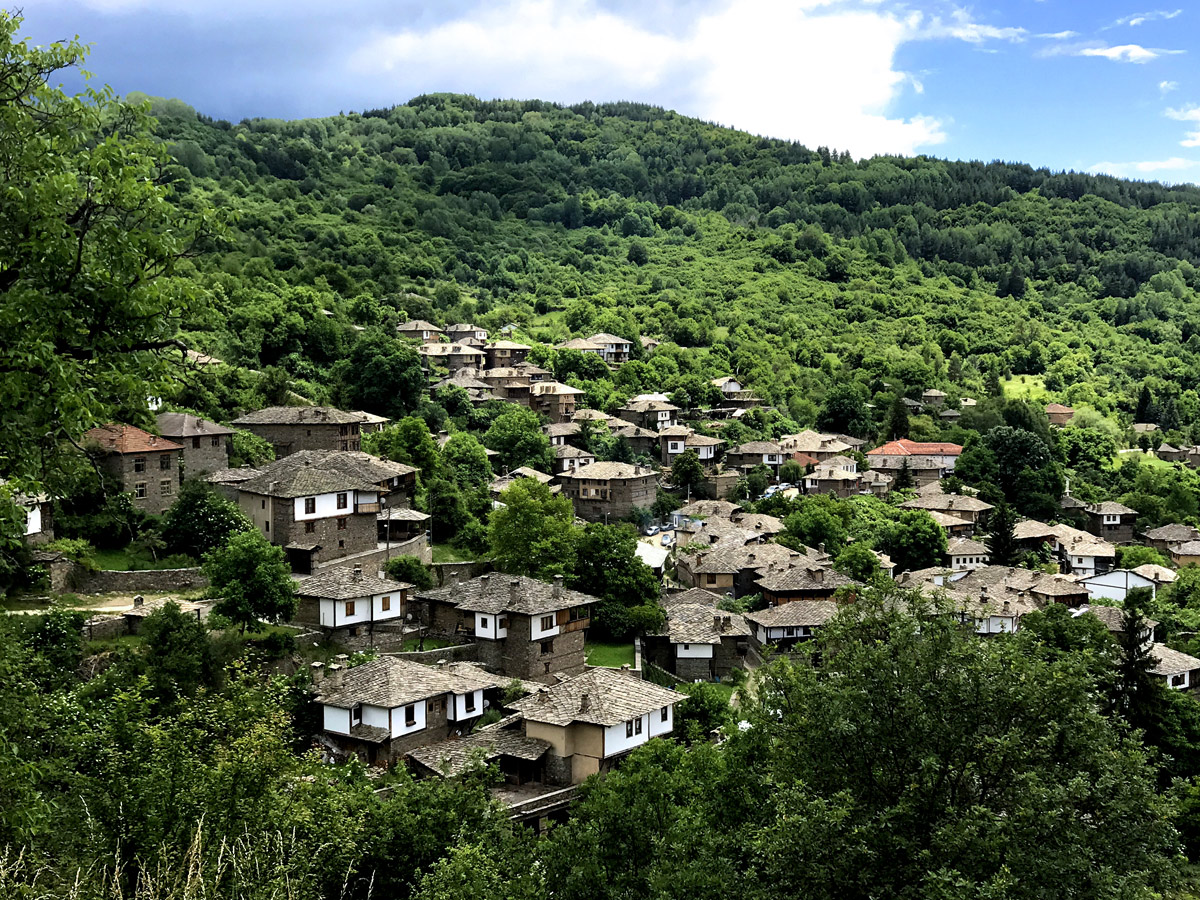
Interestingly we saw several large piles of stones on the side of the road. It turns out these are concessions from the government. The mined stones are brought to wide side-road sections, split by hand, and packed in crates, mostly for exports, especially Germany. Right now, it is a very profitable business.
Dospat is next to a large dam of the same name. The mosque in the middle of the sloped city stood out.

There are hundreds of stone bridges in this neck of the country. They have a simple charm and beauty.
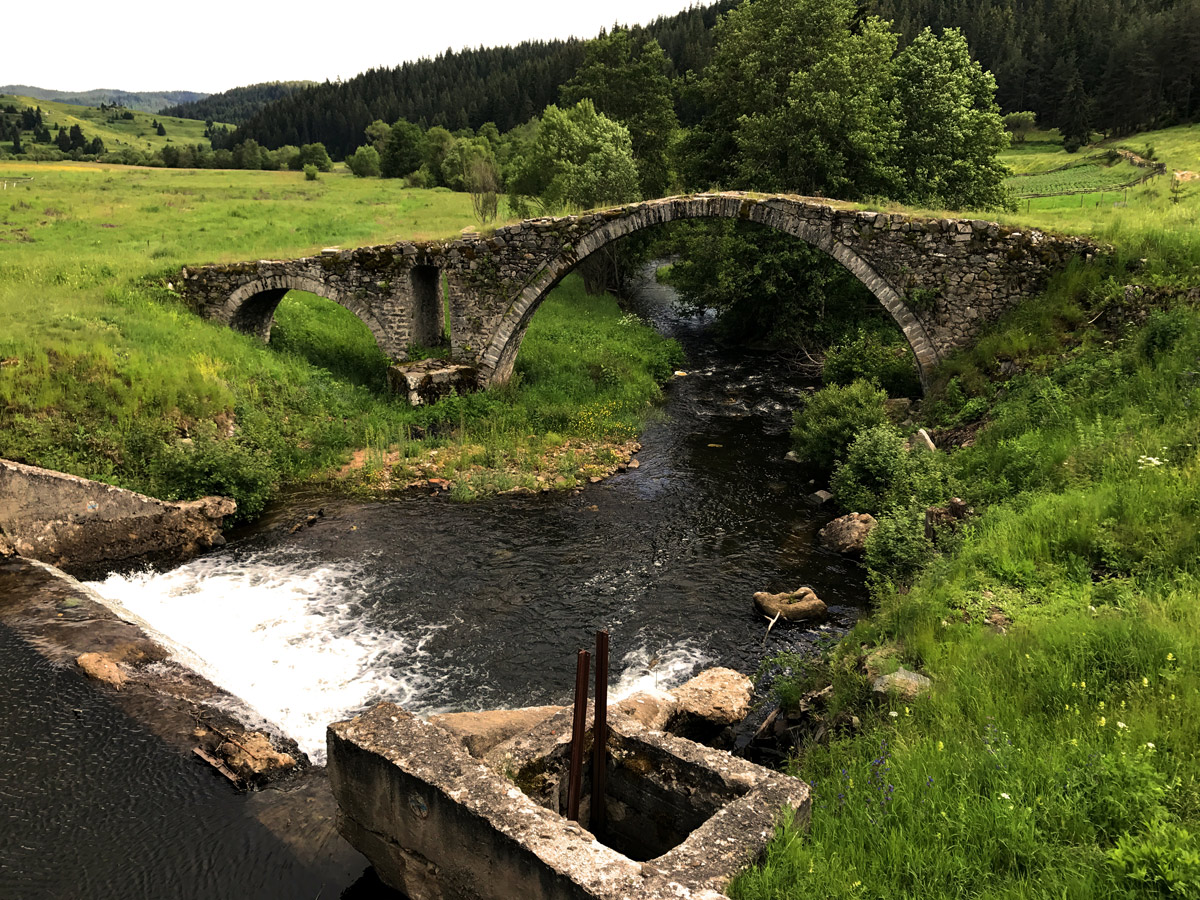
Trigrad Gorge and Village
The Trigrad Gorge is a canyon over four miles deep in the Rhodope Mountains and only 300 feet wide at its narrowest point. It has many karst (limestone) in irregular formations that give it a unique appearance and an appeal to rock climbers. The Trigrad River weaves through the canyon and at one point enters the Devil’s Throat Cave and emerges a third of a mile later. The gorge has numerous caves for exploration (be careful or use a guide).

Trigrad village is a few miles south of the gorge. It is an agreeable place, notable for having a mosque and a church only a few minutes-walk away.

We stayed at the recently built Arkan Han for one night. The cabin rooms have black and white photos of old Bulgaria and some antique-looking furniture. The restaurant has a wide selection on the menu and generally good food.
Bird Watching near Zhrebichko
The village of Zhrebicko is just out of the mountains and is a two-hour drive north from Trigrad on a new highway funded partially by European Union. Several spots on the highway have rocks on the road as there are insufficient walls and fences for rock slides. By the village, on a hill you can only walk to, is a tiny chapel and large cross where we saw snakes, lizards and wonderful flying Nemoptera Sinuata insects which look like butterflies.

Down the hill, Emil had constructed a bird blind where we spent almost two hours watching bee-eater birds (common in west Asia and north Africa, but found only in a few European places in the south). They eat mostly flying insects, especially bees and wasps. They live in colonies and nest in burrows. They are colorful with brown and yellow bodies, green wings and a black beak.

I used my 200mm lens (300mm equivalent for full frame camera) and shot them whenever they rested on a branch. While I got some decent shots, my lens’ focal length was too short for this type of photography (bird photographers usually have 400mm or 500mm lenses).
Bratsigovo
We stayed two nights in Bratsigovo in the Stromon Hotel. It was open these nights just for us and a bird watcher group escorted by Emil’s company. After checking in mid-afternoon, we walked around town and by a famous tower, which was reputedly built against the recommendations of engineers, but still standing after withstanding major earthquakes. We visited the local history museum just before it closed and the local historian at the desk gave us a ton of information on the town and the bloody uprising against the Ottomans (especially in the 1870s).

Emil also had a bird blind in Bratsigovo.
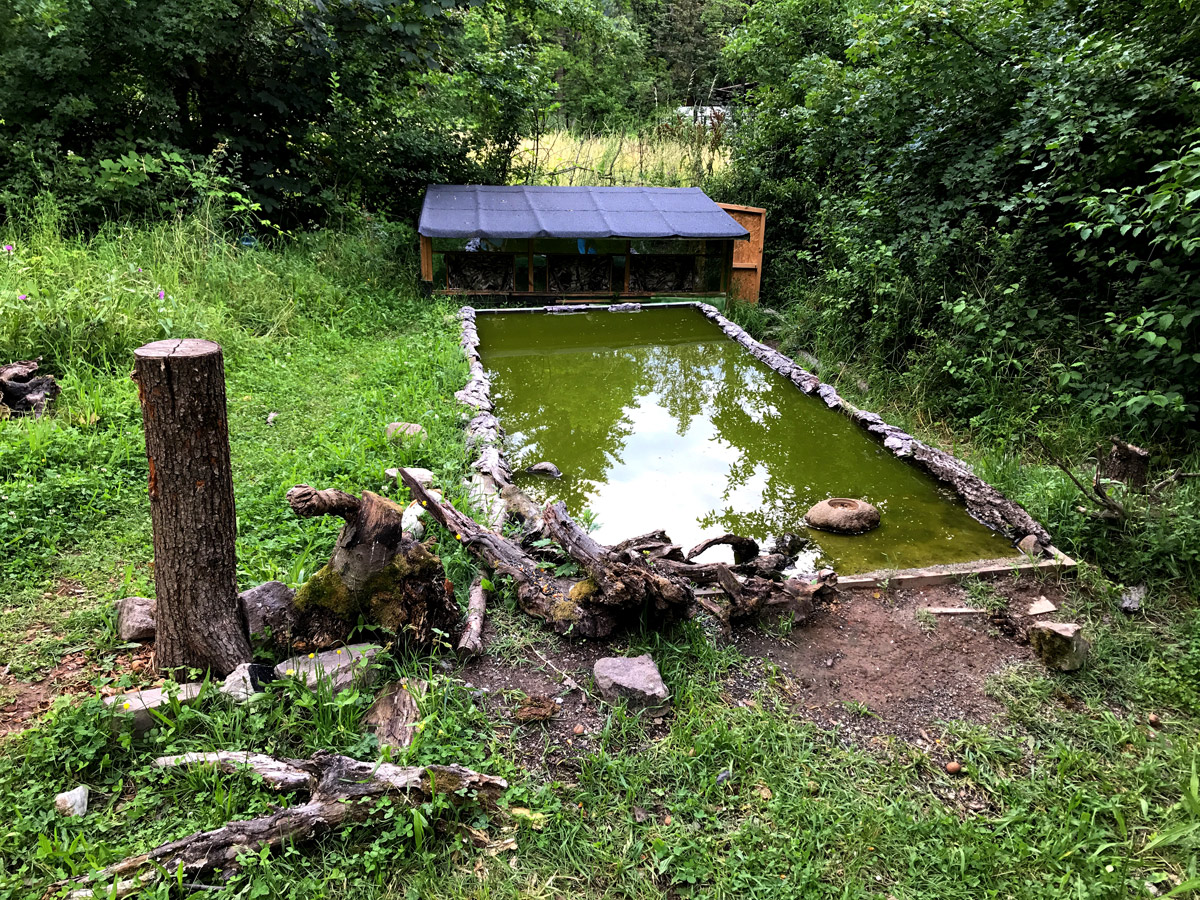
Here we salvaged a few bird shots from hundreds.
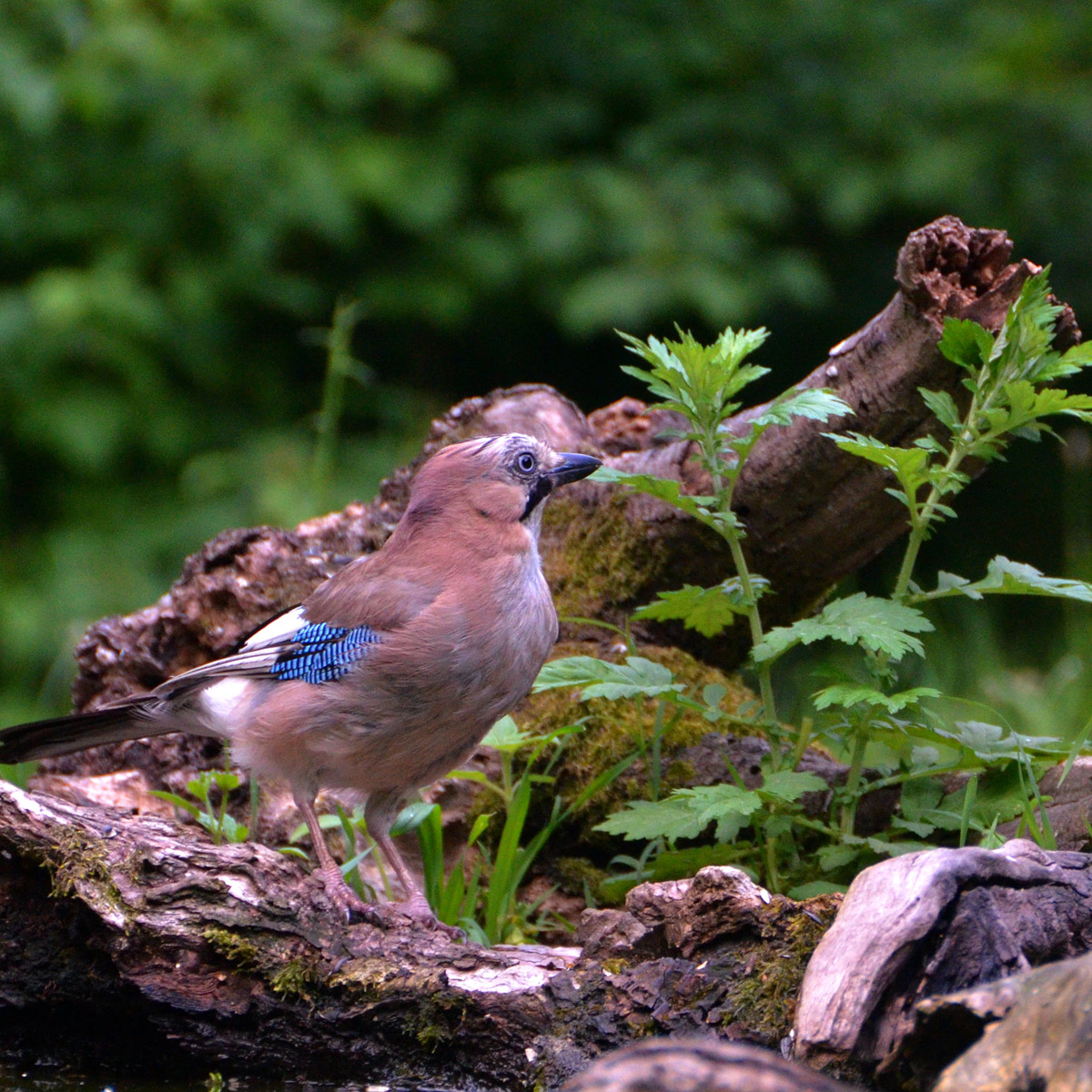
Plovdiv
Plovdiv is Bulgaria’s second biggest city with a population around 700,000 in the metropolitan area. We spent almost a full day there, which is the minimum recommended. The tourist sites are in the center of the old town, which has several buildings erected in the late 19th century during the National Revival period. Also, there are the ruins of Roman arena, an amphitheater and a hilltop fort (with a great view of the city).
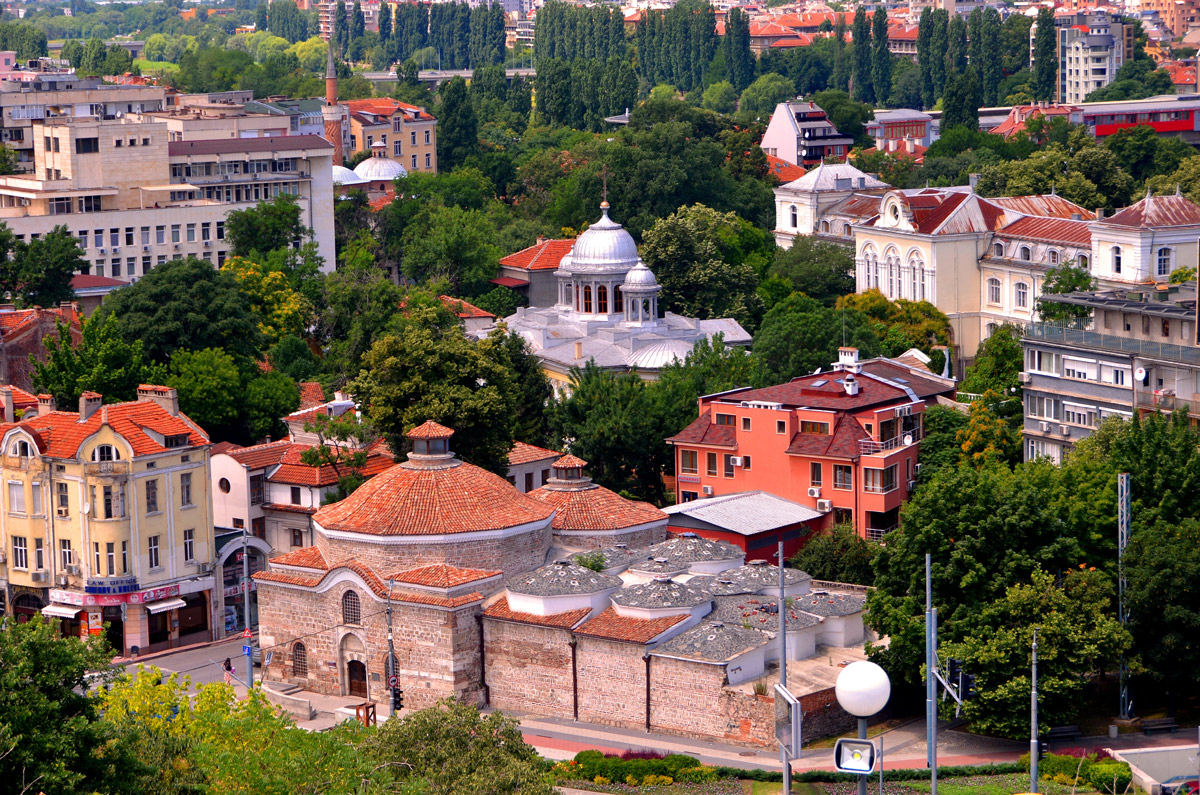
We took a tour of the Kuyumdzhiogh House, which is now an ethnographic museum. It has been partially funded by National Geographic, which made me feel good that a portion of my subscription over the decades has been going to endeavors like this.

We spent a few minutes in the Church of St Konstantin & Elena with colorful frescos, two of which were painted by the famous Bulgarian Zahari Zograf. We should have spent more time there, but were tired and had church-art fatigue after three weeks of travel. However, that fatigue evaporated when we went into the Icon Museum, which has about seventy wonderful paintings on display, most very easy to see. These were collected from churches under threat during the Communist era. It was satisfying being able to look at a large percentage of them in detail in an hour.
That night we went to a restaurant roughly translated into “The Meadow” and saw traditional Bulgarian folk dancing with mostly foreign tourist groups. While I usually stay clear of made-for-tourist spots, this was worth it. For a small country, Bulgaria is famous for a wide variety of folk dance styles. The dancers were young men and women dressed in traditional costumes. They were probably studying dance and making some extra money.
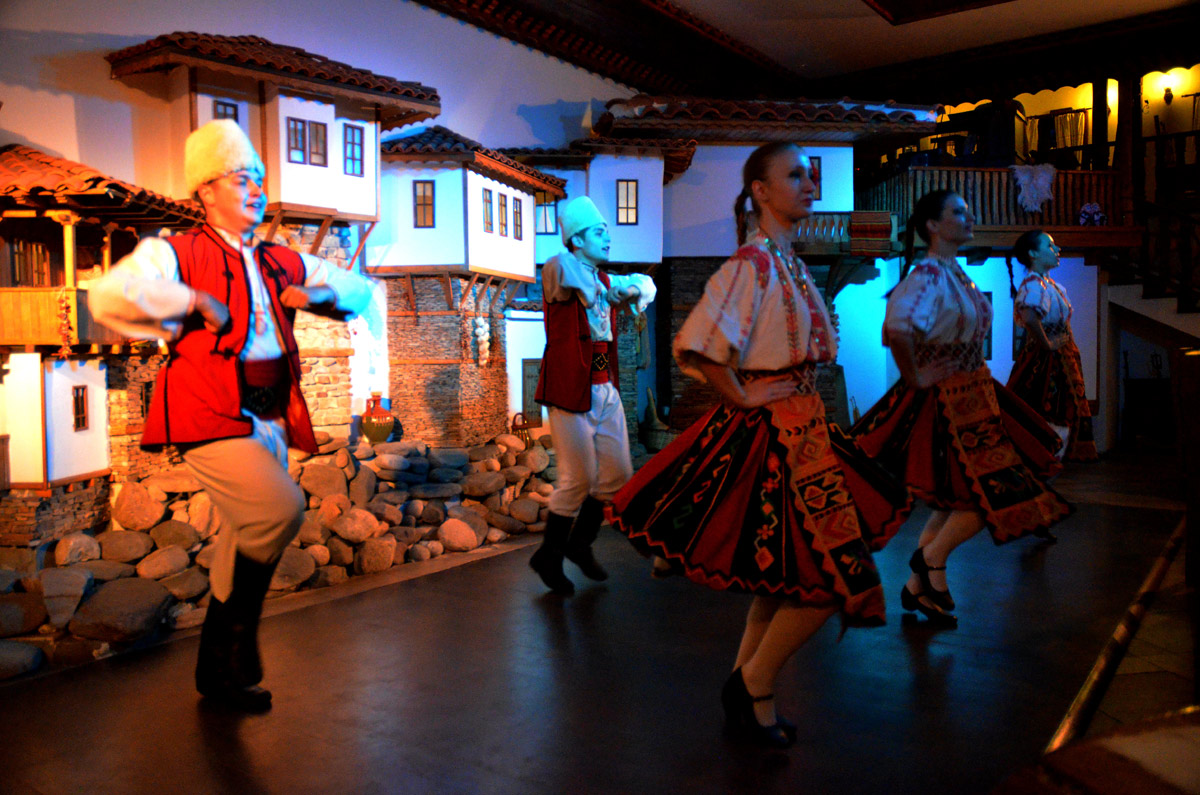
Bachkovo Monastery
During the late afternoon at Plovdiv, we drove about 45 minutes to Bachkovo Monastery, a UNESCO World Heritage Site. It was founded in 1083, destroyed by the Ottomans in the 1500s and rebuilt the 1600s. The large complex was a little daunting and trying to figure what was open or closed to visitors was confusing. We focused on the Church of Sveta Bogoroditsa, which had an incredible iconostatis and frescos everywhere possible. There were three French restorers working and painstakingly reviving the frescos. The ones not yet worked on were dark, faded and hard to see. We met an old monk who was uncharacteristically friendly. He gave Khadija blessed holy water in a Sprite bottle.
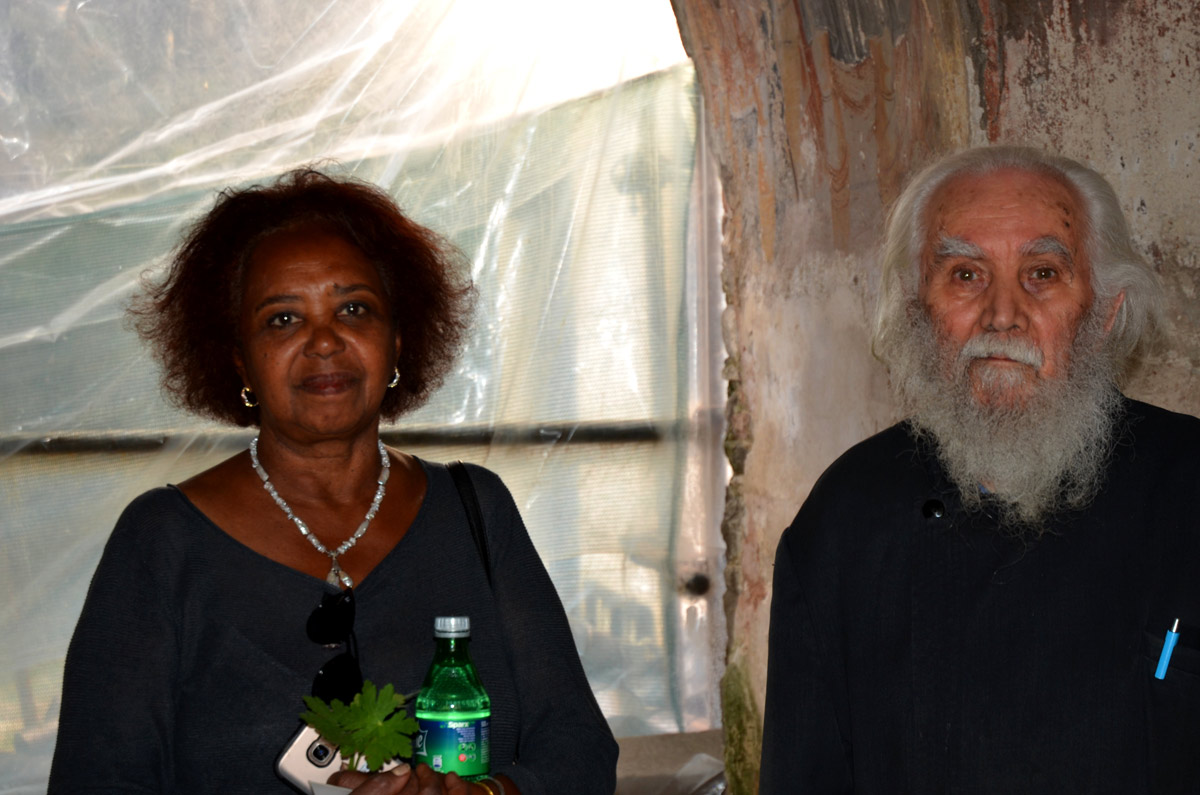
When we drove in, we saw a severely crippled man begging for money at the entrance of the outside parking lot. After our visit, near closing time, we rested outside and I saw him again and considered giving him some money. Then a small black car speeded into the parking lot, did a quick U-turn and stopped by the beggar. I thought he was going to give him money. Then the driver, a slim man probably in his twenties and short pants, jumped out, helped the beggar into the car, threw his crutches onto the backseat, and sped away. Realizing the beggar was working a shift and most likely in partnership with the driver and maybe others made me rethink about giving money to others.
Staro Zhelezari
In our last full day in Bulgaria, we drove west towards Sofia. We went through the otherwise nondescript town of Staro Zhelezari and noticed a mural of a fictitious meeting of Libya President Qaddafi shaking hands with US President Obama.

We saw a couple more and left. I researched later and found there were a number of murals of famous people in the town.
Thracian Tomb near Starosel
We stopped at a domed temple and adjacent tomb from the Thracian period. While the sites are certainly not the Egyptian pyramids, they are worth visiting as an introduction to their history and culture.
The Thracians were horse and cattle breeders, metal miners and goldsmiths with no known written language. They were a mixture of indigenous peoples and Indo-Europeans, occupying central and southern Europe starting about 5,000 years ago. They were split into tribes who could not unite long enough to become a cohesive government. Eventually, they were demographically and culturally absorbed into the Greeks, Romans, Slavs, Celts, invading Asian tribes and, in the fourth century, the Christian Church. Interesting trivia: Spartacus, who led the slave rebellion against Rome, was a Thracian.
While we were there, it was July 21, the summer solstice. There were a group of people outside the temple in the hot sun doing something like tai chi or performing pagan rituals.
Koprivshititsa
Continuing towards Sofia, we had lunch at Koprivshititsa (non-Slavic speakers, try saying that three times quickly). After having a long lunch, we didn’ have much time here. We walked around, saw several National Revival homes (many are museums which charge a small admission), endearing stone bridges and interesting grave sites. It is one of the country’s most attractive town and would be a great place to spend a day.
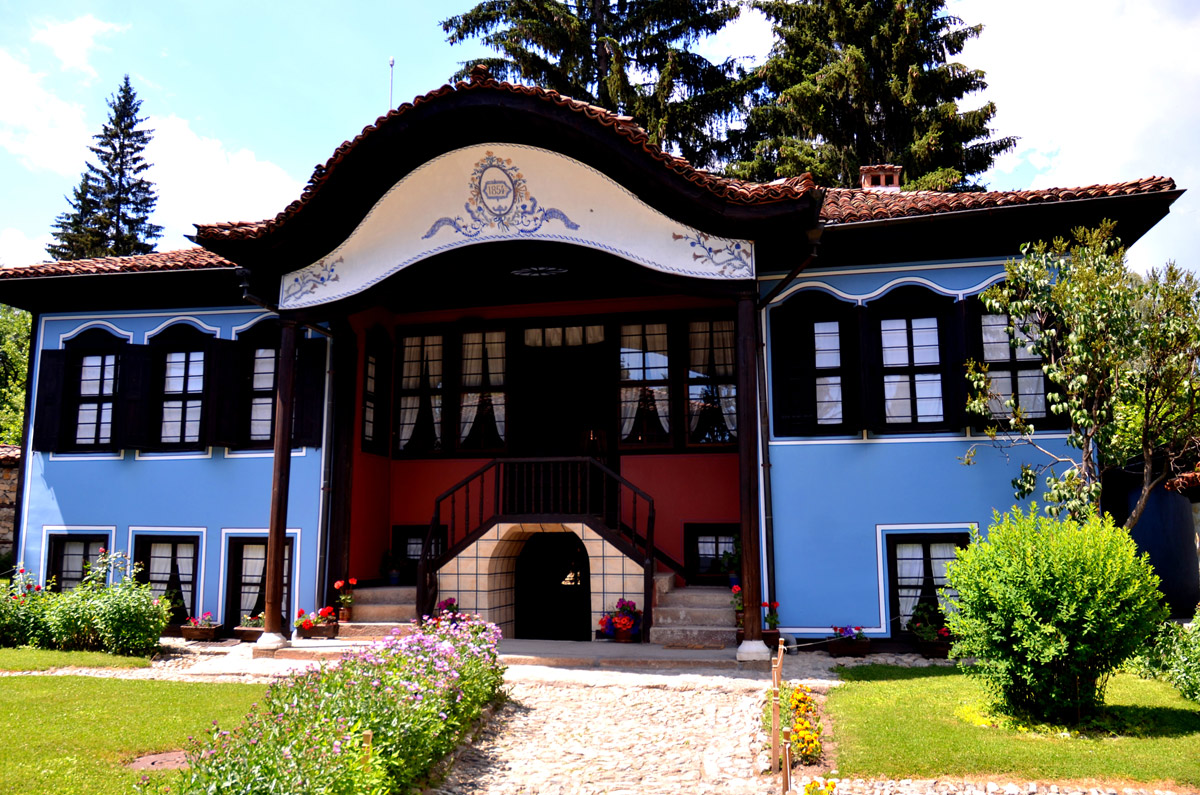
Sofia
It took two and half hours to cross a mountain range and barely move in Sofia rush hour traffic to reach our Hotel Romantic on Mount Vitosha (south of Sofia – Dragalevtsi,
Gen. Kovachev Street 9). This one met the usual standards of mid-priced hotels in the US. It was more expensive, as a three- person meal with drinks and tip cost US$70. At 8pm, we drove into Sofia and arrived in the center city in a half hour. The historic center was inhabited by crowds of locals milling around chatting and playing various physical and card games There was a high proportion of young people, different than other places we visited.
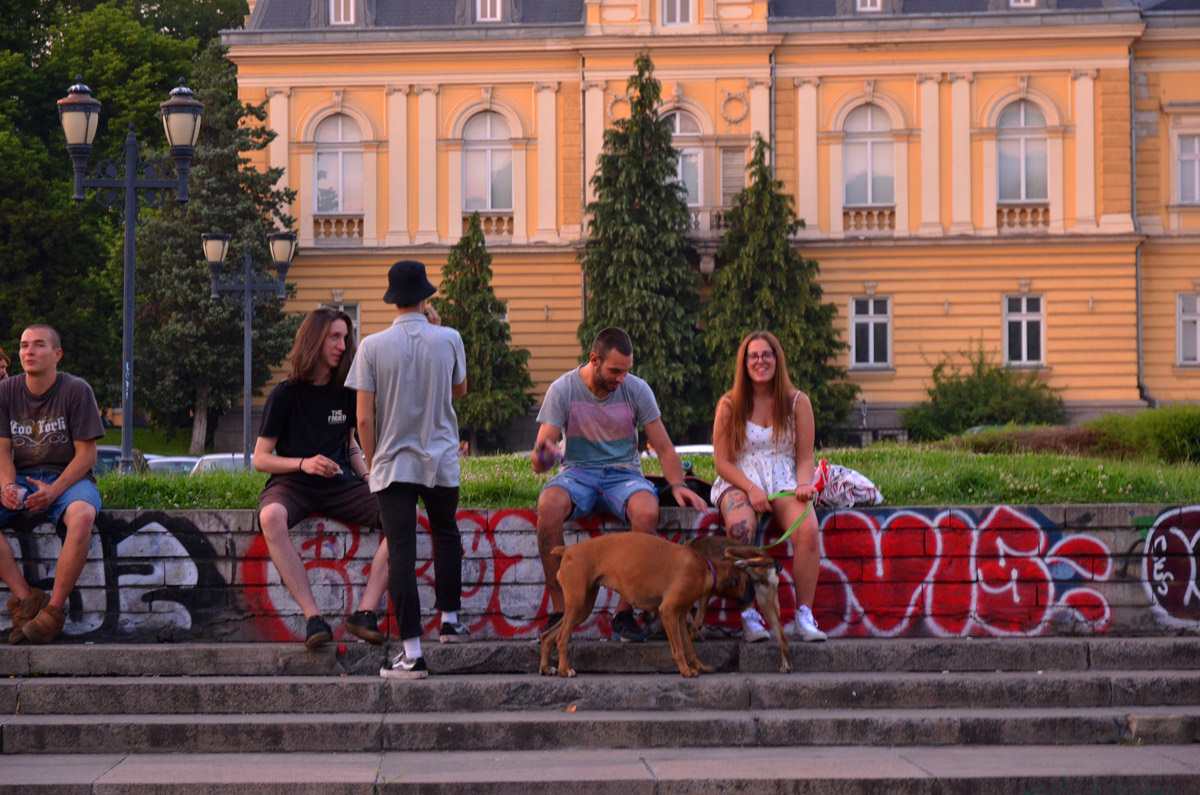
As any guide books tell you, two of the architecturally outstanding buildings are next to each other. We could not go in either, as it was past visiting hours.
The white and green Russian Church (Church of St Nicholas the Miracle-Maker) was built between 1907 and 1914 and is similar to Russian churches from the 16th century. It has five small gold domes; four on short towers on each corner of the main building and one on top of a high tower in the middle.
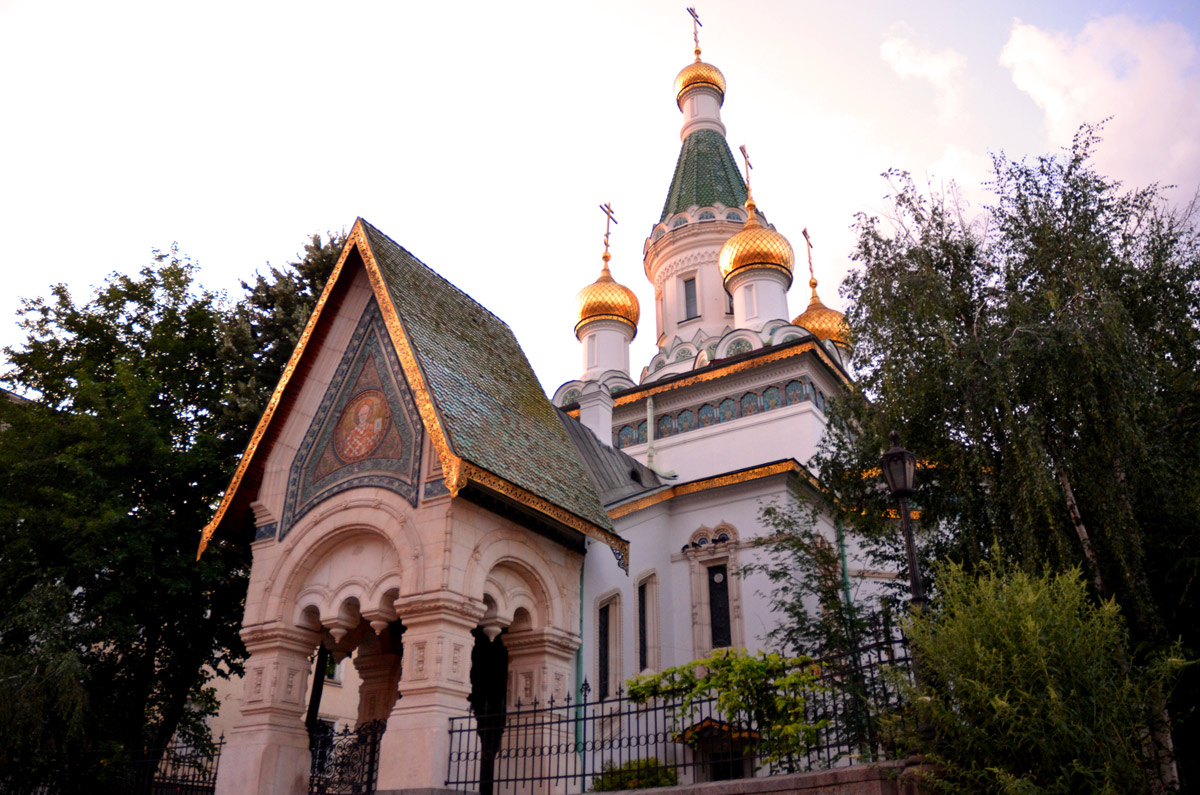
The crown jewel of the city is the massive Aleksandur Nevski Memorial Church, which was built between 1882 and 1924. It is a commemoration of the Russian victory over the Ottomans in 1878, which ushered in Bulgaria’s independence. It would take several paragraphs to describe the exterior of the buildings. The most interesting fact to me is the church has twelve bells with a total weight of 23 tons and can be heard 18 miles away
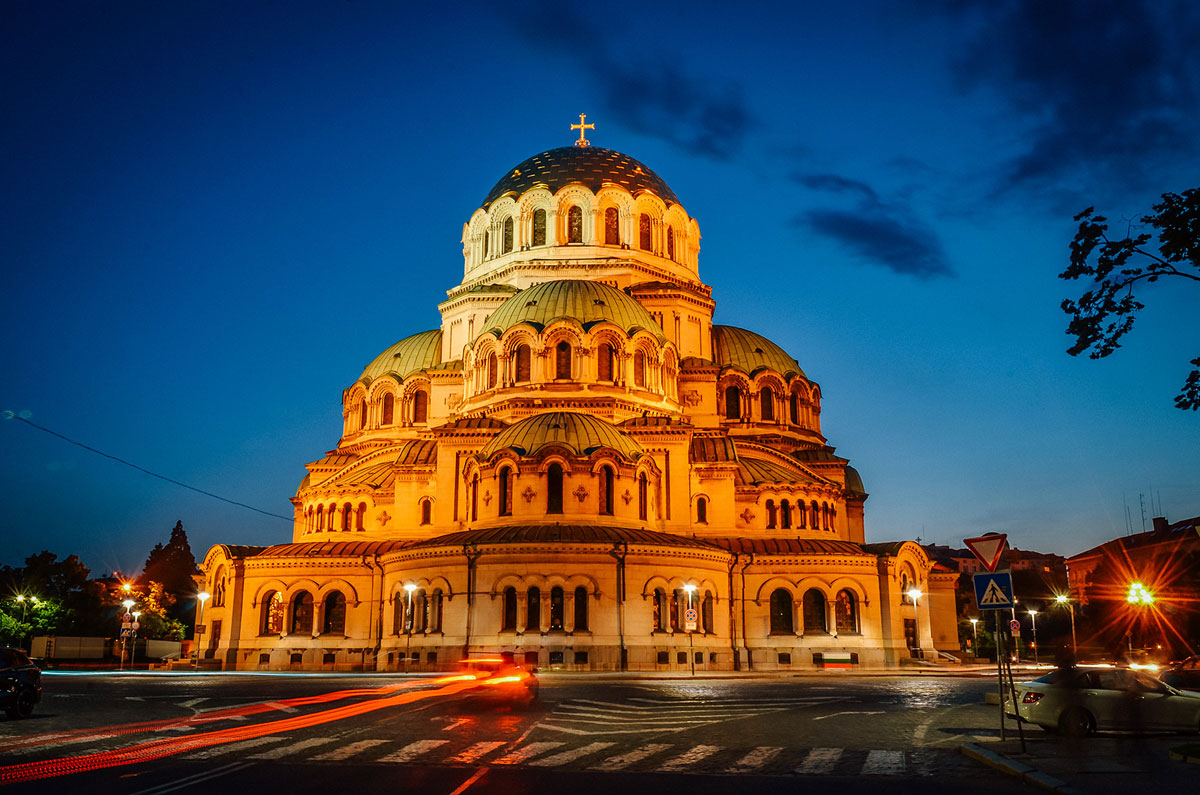
After ceasing night photography, as the sky no longer had any cobalt blue left, I had to go into the Metro for a few minutes and check it out. I am working on a black and white photobook of the New York City subway, which has made me curious about subways everywhere. It is a modern system, which opened in 1998. Tunneling took a long time, because of the effort to preserve different layers of history back to antiquity.
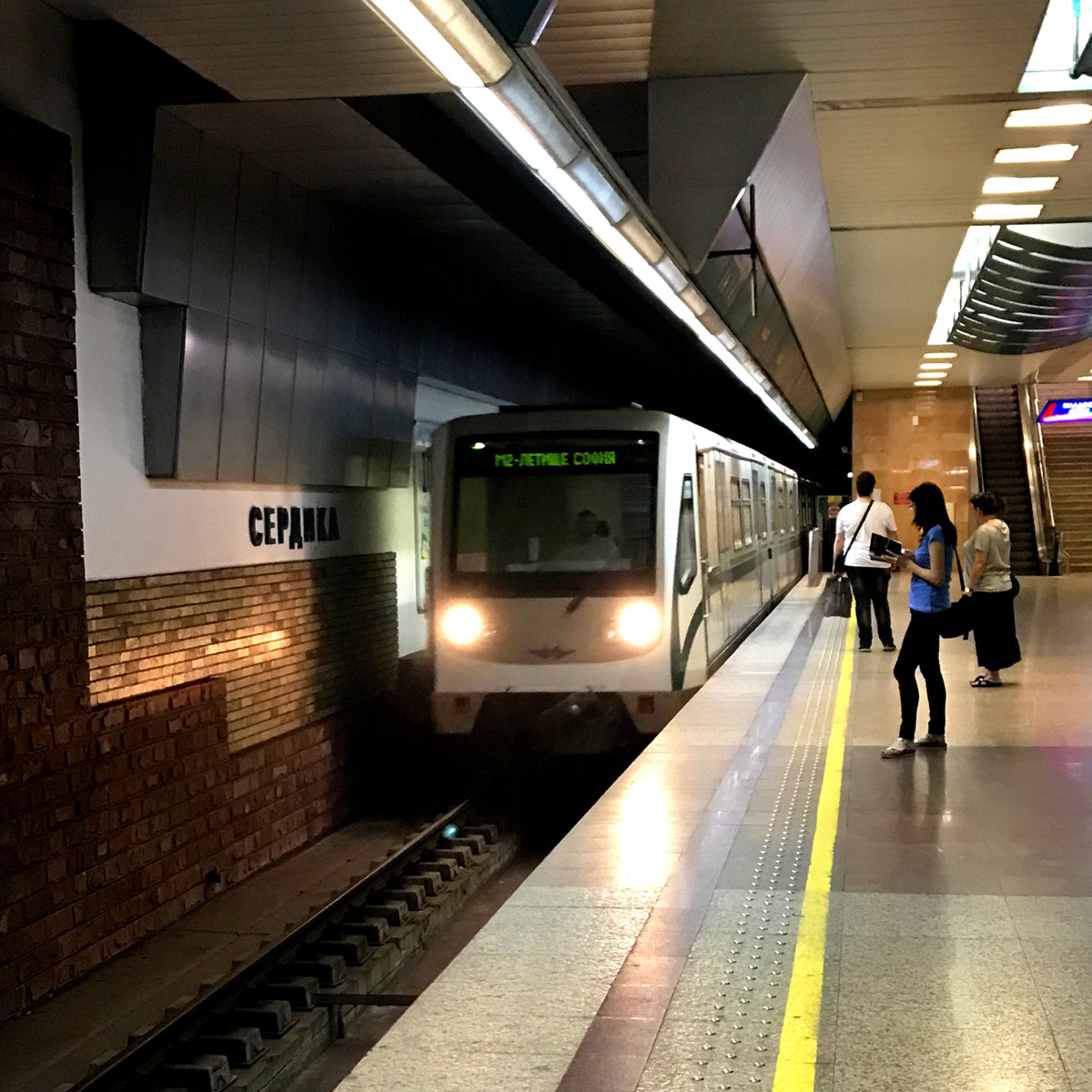
Final Thoughts
Would I recommend going to Bulgaria? Certainly yes. It has a terrific mixture of outdoor attractions (mountains and beaches) and historical centers (Sofia and Plovdiv). Considering the size of the country, it may have the most biodiversity in Europe. It is European, but culturally influenced by southern Asian neighbors. In some places, it is a step back in time. Finally, it is one the cheapest destinations to travel in Europe. So why not go, if you can?

